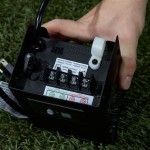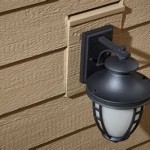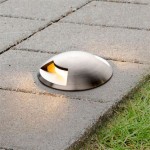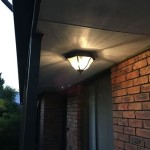How To Set Outdoor Timers for Lights
Outdoor lighting enhances the aesthetic appeal of a home, provides safety and security, and extends the usability of outdoor spaces. However, leaving lights on all night can waste energy and money. Outdoor timers offer a convenient solution to automatically schedule when lights turn on and off, ensuring optimal energy efficiency and security benefits. This guide will delve into the steps involved in setting up outdoor timers for lights, exploring the different types available and providing tips for a successful installation.
Choosing the Right Timer
The first step in setting outdoor timers for lights is choosing the appropriate timer type. The market offers a wide range of options, each with specific features and applications. Here are some common types:
- Plug-in Timers: These are the simplest and most cost-effective solution. They plug directly into an outlet and control the plugged-in light fixture. Plug-in timers are ideal for simple lighting applications and are easily relocatable if needed.
- Hardwired Timers: Hardwired timers are installed in the electrical box, connecting directly to the wiring of the light fixture. They offer a permanent and reliable solution, particularly suitable for high-wattage lights or fixtures requiring a dedicated circuit.
- Photocell Timers: These timers use a light sensor to automatically switch on lights at dusk and off at dawn. They are highly convenient for outdoor lighting applications, as they adjust to seasonal changes in daylight hours.
- Smart Timers: Smart timers offer advanced features, allowing users to remotely control and schedule lights using a smartphone app. They enable scheduling, adjusting timings, and even creating custom lighting sequences, providing ultimate flexibility and control.
When selecting a timer, consider factors such as the type of light fixture, the desired lighting schedule, and the level of automation required. Additionally, check the timer's power rating to ensure it can handle the wattage of the light fixture.
Setting Up the Timer
Once you have chosen the appropriate timer, the next step involves installing and configuring it. The specific instructions may vary depending on the timer type, but the general steps are outlined below:
- Plug-in Timers: Simply plug the timer into an outlet and then connect the light fixture to the timer. Many plug-in timers feature a dial or digital display for scheduling the on/off times.
- Hardwired Timers: This process requires professional electrical expertise. The timer is wired directly to the light fixture's circuit, and the wiring connections must be made carefully to ensure safe and proper operation.
- Photocell Timers: Photocell timers typically come with a sensor and a separate timer unit. Install the sensor in a location that receives adequate sunlight and then connect the timer to the light fixture's circuit.
- Smart Timers: Smart timers require a compatible smart hub or bridge. Connect the timer to the hub and download the corresponding app to your smartphone. Configure the timer settings and schedule desired on/off times through the app.
Refer to the manufacturer's instructions for specific installation and configuration details. Take precautions to avoid electrical shocks and ensure proper wiring connections during installation.
Tips for Successful Installation
To ensure a successful outdoor timer installation, consider the following tips:
- Choose a Suitable Location: Select a location for the timer that is easily accessible, protected from the elements, and provides sufficient visibility for the light fixture.
- Test the Timer: Once installed, test the timer by manually turning the lights on and off, ensuring they operate correctly.
- Adjust Timings as Needed: After initial setup, observe the lighting schedule and adjust the timings as needed to align with your preferred preferences.
- Consider Additional Features: Explore additional features like sunrise/sunset scheduling, vacation modes, and security settings to enhance timer functionality.
By following these steps and tips, homeowners can successfully set up outdoor timers for lights, enhancing their outdoor living spaces and maximizing energy efficiency.

How To Put Outdoor Lights On A Timer Electronicshub

Programming Your Mechanical Timer

How To Use A Timer Switch For Lights
How To Program An Outdoor Light Timer Quora

The Automatic Timers For Your Outdoor Use Bn Link

How To Adjust Your Timer For Daylight Savings Spring Lexington Outdoor Lighting

How To Set Your Outdoor Lighting Timers

How To Set A Plug Timer Mechanical Digital Switches

How To Use A Timer Switch For Lights

What Kinds Of Timers Can I Use With My Lights 1000bulbs Blog







